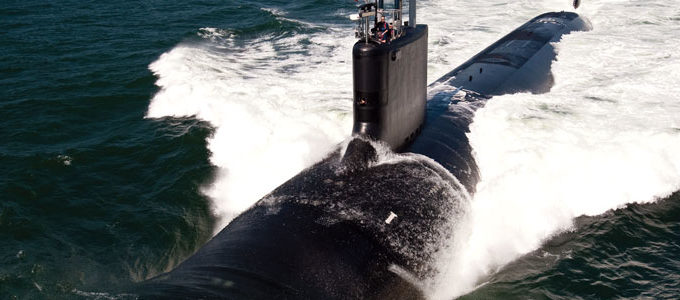Join us this Thursday, Aug 26th for the webinar presented by Doyle T. Motes III,…

The Continuing Quest for a Non-Lethal Weapons (NLW) System for Military and Civilian Law Enforcement Needs
Since the late 1980s, military, federal, state, and local law enforcement have incorporated NLW or less-than-lethal technology into their daily efforts to discourage or prevent hostile action, temporarily disable attackers, suppress unruly crowds, quell prison riots, and reduce loss of life. Dispersing a crowd safely and quickly with an NLW has been an ongoing topic of research and development for local/federal law enforcement and military agencies.
Joint Non-Lethal Weapons Directorate (JNLWD)
In 1997, the JNLWD was established under the supervision of the Marine Corps, whose Commandant acted as the Executive Agent of the program. The program formed out of the Marine Corps’ and Army’s efforts to withdraw the United Nations forces from Somalia during the mid-1990s [1]. Although the program’s origin was for peacekeeping and humanitarian assistance, the program continues to enhance adaptability and support strategic objectives that include minimizing civilian casualties, risk to U.S. forces, partners, and critical infrastructure through NLW. From 2011 to 2016, a task group consisting of researchers, scientists, engineers, and analysts across many nations and a spectrum of disciplines gathered in collaboration to identify NLW capabilities and options. Their drive was the need to provide North Atlantic Treaty Organization Allied Forces with a full spectrum of tools to meet the demands of any future operations, such as counterinsurgency, counterterrorism, stability operations, and counterpiracy (several examples of the ever-changing battlefields that U.S. forces encounter). Continuing development and research of NLW, devices, and munitions for these types of irregular warfare are critical to mission success. The JNLWD collaborates with many partners, such as the U.S. Coast Guard and Special Operations Command and other Services within the U.S. Department of Defense (DoD).
Military Needs
DoD Small Business Innovative Research/Small Business Technology Transfer (SBIR/STTR)
One of the Navy’s objectives under the DoD SBIR/STTR program is to develop a small caliber, non-lethal, untethered (wireless) human electro-muscular incapacitation (HEMI) munition that can be employed using a conventional DoD small arms weapon. Previous DoD efforts have been funded and researched by the Army and Navy, but none have led to an effective HEMI munition that meets the JNLWP desired course of action. The objective is to develop an NLW that has the “…capability of disabling individuals at distances in excess of 100 meters to support a variety of agencies” [2]. The munition must be able to penetrate materials, such as cloth and leather, attach to a human body, and incapacitate a target for a minimum of 30 s and ideally for more than 3 min [3]. These goals present specific hurdles that must be overcome. For a Taser (shown in operation in Figure 1) to incapacitate an individual for a longer duration, the amount of electricity applied needs to be increased, although only to a point. An excessive amount of electricity applied to a target would cause serious injury. However, insufficient electricity would not incapacitate the target long enough (or not at all). Another hurdle to overcome is that the target may be wearing body armor. In addition to traveling 100 m, the HEMI munition would need to penetrate the body armor to make an electrical connection with the target’s body. This presents a complicated set of parameters to meet—a projectile package powerful enough to travel the distance required, penetrate any body armor, and deliver a sufficient shock to incapacitate the target for the desired amount of time; however, it must not be fired with enough kinetic energy to kill or cause serious injury to the target.

The search for a non-lethal munition that meets the military’s requirements has been ongoing for the past 12 years. Research and development has fallen short of delivering a non-lethal munition meeting all the specific requirements, such as distance, penetration, incapacitation, ability to use with a small firearm, and associated safety requirements. Various attempts have been made and added to the knowledge base for this technical challenge; but a Taser-like bullet that encompasses all these requirements has yet to be achieved. The U.S. military’s goal is not only to develop a Taser-like bullet to meet its needs, but also to meet the needs of other law enforcement agencies such as Customs and Border Protection, the Joint Services, various departments of security, and civilian law agencies [2].
Safety has been an ongoing research topic and focus using Taser-like weapons. Controlling the amount of electricity delivered to a target, along with proper weapons training, has been difficult to achieve. Although using Tasers has prevented deaths or serious injuries by enabling officers to avoid using deadly force, claims have been made that Tasers have also contributed to some deaths. An investigation by the Washington Post revealed that, on average, a death occurs once per week in confrontations in which a Taser is deployed. However, according to the investigation, many of the deaths are connected to improper use of the weapon [4]. When used in “probe mode,” the Taser fires two barbs with wires that deliver an electric current, which causes the target’s muscles to seize (shown in Figure 2). However, studies have shown that the shock from a Taser can cause cardiac arrest in some individuals [5]. The duration of the shock-induced Taser has led to various degrees of injury to its recipients. The British Medical Journal reported that the use of Tasers can lead to fatal cardiac events or disturbances of the natural rhythm of the heart, specifically arrhythmias and ventricular fibrillation [6]. When used in “drive stunning,” the Taser is placed against a person’s body and causes localized pain, which is used to control a dangerous individual [4]. Some officers have administered multiple stuns to a target (a process known as “pain compliance”) and used this as a punishment. In 2013, “Taser International issued a product warning to law enforcement about drive stunning, noting the need for caution and restraint when using this technique on people with mental illnesses” [4]. Other risks involving using Tasers include seizures, skin burns, collapsed lungs, and uncontrolled falls from muscles locking up, which can result in head injuries [6]. Other factors have played a role in the reported deaths as well, including mental illness, methamphetamine or PCP intoxication, hypertensive heart disease, coronary artery disease, and cocaine toxicity. These types of factors, combined with the shock from a Taser, can elicit various unpredictable responses from the target.

The History of Tasers
During the 1960s, airline hijackings prompted authorities to search for an NLW to avoid in-flight mishaps from a firearm discharge in a pressurized cabin and yet be able to subdue an attacker without killing him/her. Dr. Jack Cover, a NASA researcher and inventor, read about a man who had touched a fallen power line, was temporarily immobilized, and survived. Cover believed that he could develop a weapon that fired small bursts of electricity to immobilize, but not kill, an attacker [7]; this became the Taser. Taser Systems, Inc., was formed in 1970 and named for a Tom Swift novel about the (T)homas (A). (S)wift (E)lectric (R)ifle. The Taser shot darts attached to an insulated wire with a range of 15 ft and delivered a brief jolt of electricity to incapacitate its target by causing muscle spasms.
During the 1970s, the Taser was not widely accepted because the darts were fired using a gunpowder charge, thus branding the device as a firearm. In 1993, Dr. Cover developed a version in which the darts were fired by compressed air instead of gunpowder, leading the Taser gun to be sold not only to law enforcement but to the public by the manufacturer Taser International [7].
Taser International, now known as Axon Enterprise, Inc., has been the dominant producer of Tasers in the U.S. market, where the majority of users are law enforcement. This, in effect, gave the company a monopoly on the Taser market. In 2005, Taser International began offering accessories for their Taser products, such as TASERCam, which includes a grip-mounted camera. In 2009, the company launched a body camera division, marketing body cameras to law enforcement agencies. Axon also markets “Evidence.com,” which is a platform that police use to store and manage body camera footage.
Axon’s Taser technology revolves around wires. “When a shooter pulls the trigger of an Axon Taser, compressed nitrogen gas shoots two-pronged darts from the weapon’s barrel, which are attached to electrically charged copper wires. Tasers generally only function properly if the shooter’s target happens to be within 15 ft or so of the shooter, and if the darts get close enough to (or impale) the target’s skin. If the distance is too great, or if the darts don’t connect with the target in just the right way, the Taser is going to fail” (“The Verge,” Matt Stroud [8]). Axon attempted to market a wireless Taser using its eXtended range electronic projectile (XREP; shown in Figure 3), less-lethal ammunition technology, which was first developed for military use with funding from the Office of Naval Research. Electrically charged projectiles (XREPs) were shot from a Taser/Mossberg X12 shotgun up to 100 ft away and were capable of providing a 20-s shock to the target. However, the shotgun was bulky, and the shooter was unable to control the 20-s charge of the XREP projectile. The company took the X12 off the market and discontinued production of the XREP ammunition (around 2012) [9, 10], citing that “…use of XREP after its expiration date may result in malfunctions and lack of effectiveness” [10].

Digital Ally, a company that produces police body and dashboard cameras, has stepped into the Taser stun gun arena and announced in December 2017 that it had secured a patent for a “…revolutionary wirelessly conducted and controlled electroshock weapon” [8, 12]. The company is in the prototype stage of producing a wireless Taser that is small and contains a remote control. Their technology revolves around using radio frequencies to transmit electricity into the target. Their patented design uses compressed gas to shoot a projectile that does not automatically emit an electrical charge but can if the shooter deems it necessary. In addition, the shooter can dial the intensity of the charge up or down by using the radio controller [9]. Another distinguishing characteristic of Digital Ally’s prototype is that the projectile being shot could be used as a tracking device on the target if the shooter decides not to emit the shock to the target. Having control of the shock gives the shooter the ability to warn the target that if they do not comply, a shock will be emitted. Although not in production yet, the wireless Taser from Digital Ally could potentially be a viable competitor in the Taser market, which would be the first competitor in more than a decade.
Other companies, such as Karbon Arms and Phazzer, have attempted to enter the Taser market. However, their attempts were unsuccessful and mainly centered around a wired Taser rather than a wireless one.
Summary
The long, sought-after, yet unmet need of wireless munitions continues. In August of this year, the JNLWD hosted an interactive NLW range demonstration for federal agency and Joint Force leaders. Their mission continues to identify, develop, test, field and provide nonlethal weapons for operating forces to minimize casualties and collateral damage. The Navy’s recent topic in the current DoD SBIR program solicitation to develop a wireless HEMI munition involves three phases: (1) develop a conceptual design, (2) deliver a prototype, and (3) build additional prototypes for long-range, extended-duration HEMI munitions [2]. The need for the non-lethal HEMI munition is to support the Joint Services, civilian law enforcement, U.S. Department of Homeland Security, Department of State, and Department of Justice, and the Secret Service and Customs and Border Patrol.



